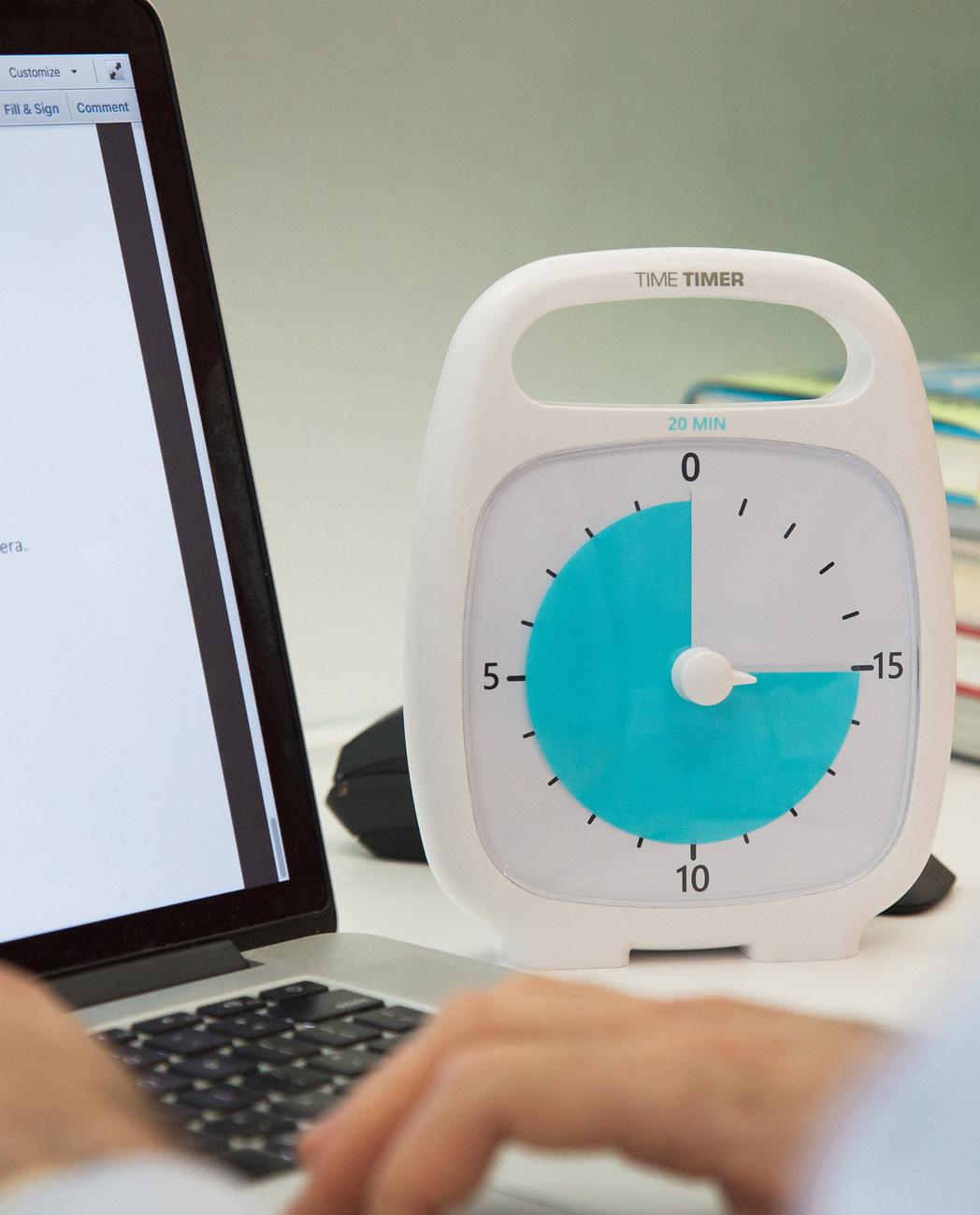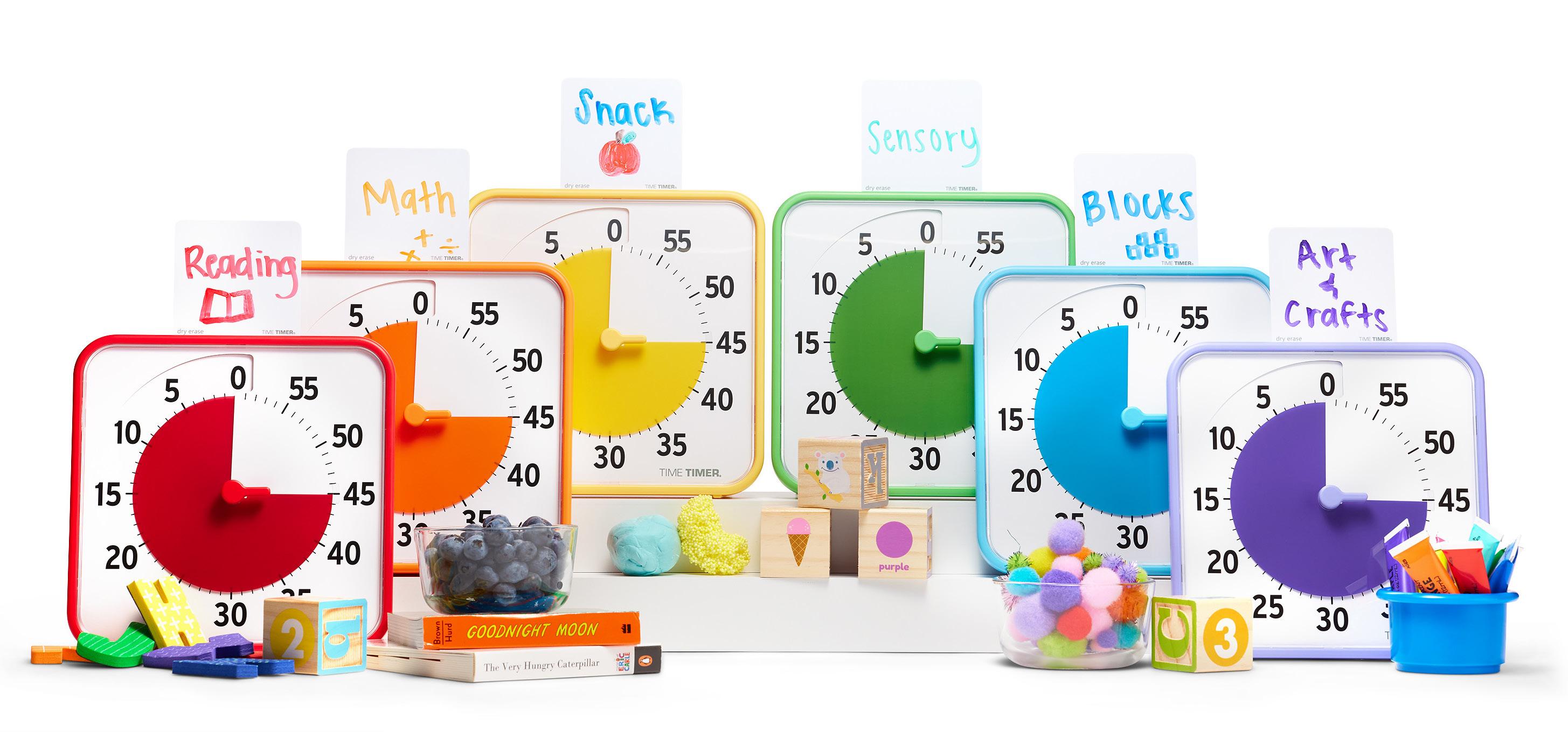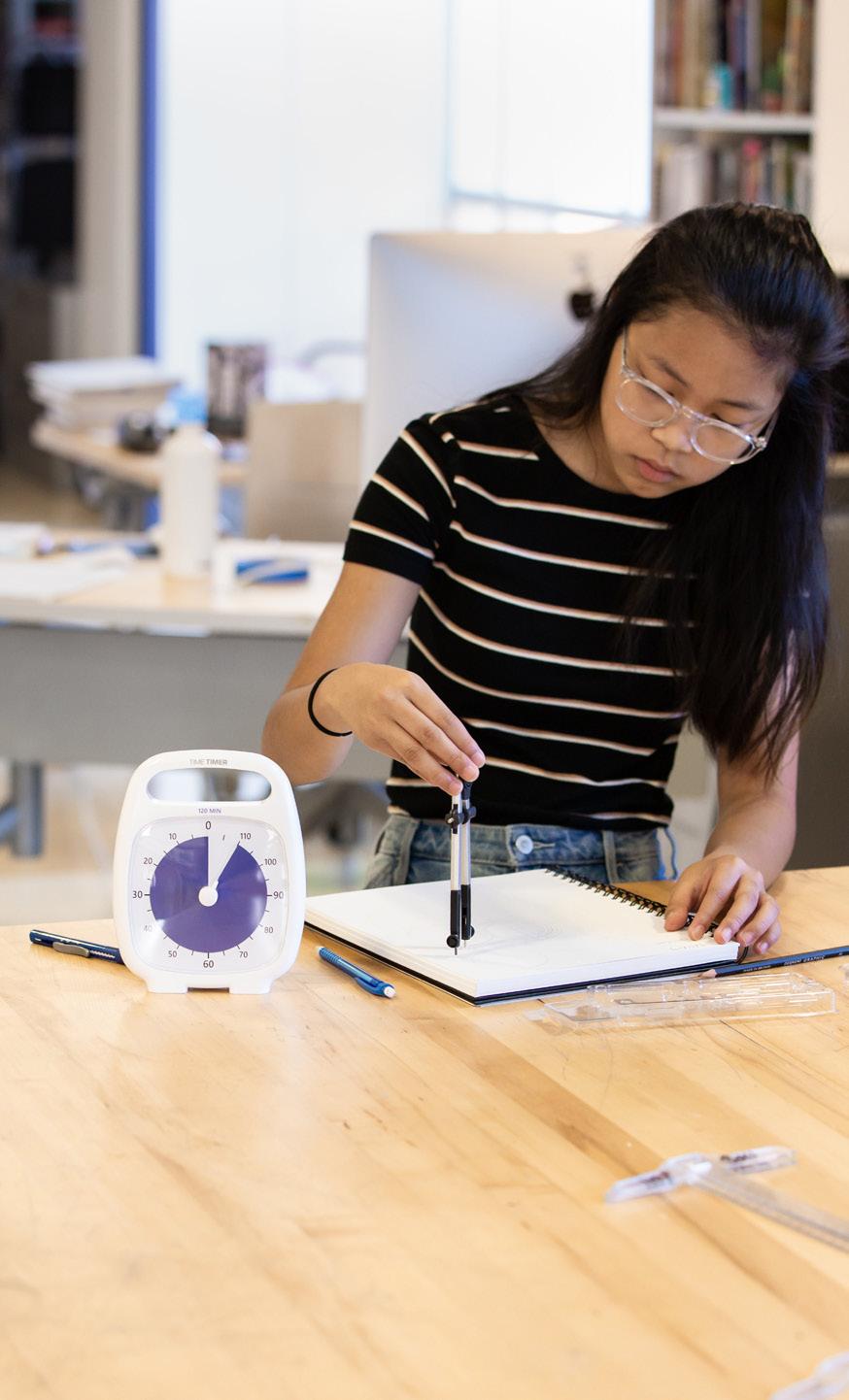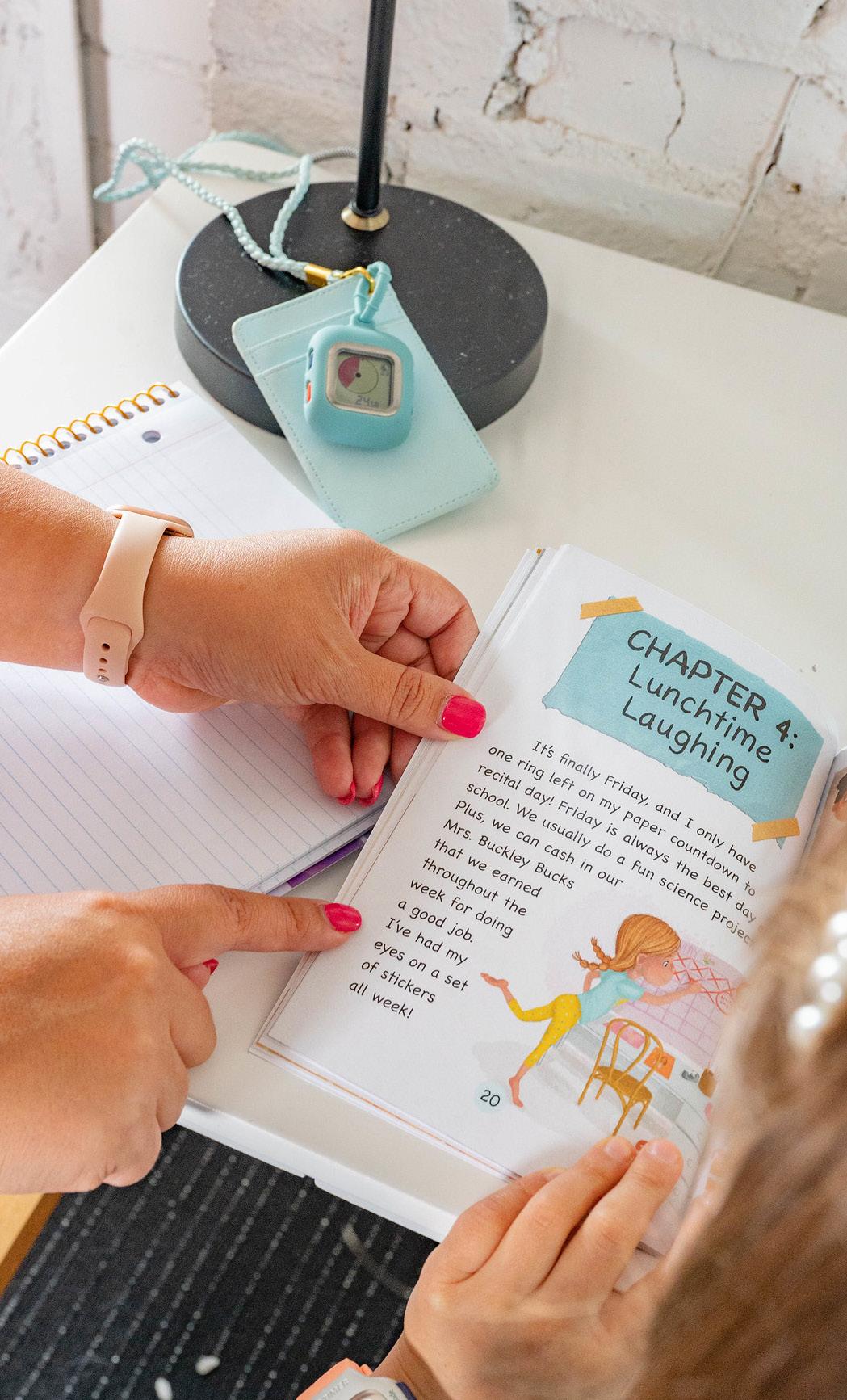
5 minute read
Time Management Strategy #3
Build Parent Input
Incorporating parent input into the IEP development process is not only a valuable practice, but also a powerful time-saving strategy. Parents possess a wealth of knowledge about their child's strengths, challenges, and unique qualities that can significantly contribute to crafting a comprehensive and effective IEP.
By actively involving parents in the process, educators can eliminate guesswork and help streamline decision-making. Understanding a child's home environment, learning preferences, and individualized supports outside of the classroom ensures that the IEP is customized to suit their specific needs.
Collaboration with parents fosters a shared sense of responsibility, promoting a united front in nurturing the child's growth and progress. By embracing this collaborative approach, teachers and parents can work together efficiently, saving time while creating an IEP that serves as a powerful roadmap for the child's educational journey.
Action Step: Set your timer for 15 minutes and dedicate this time to building the “Parent Educational Concerns” section of the IEP. Depending on what IEP writing program your district requires, the section might have a different title, but EVERY IEP has a section for a parent’s voice - guaranteed! Look through the current IEP document and find what was shared from the parent perspective at the last meeting.
Parents - As part of your IEP prep, make sure to submit a letter with your parent input one week prior to your IEP meeting discussing your concerns and desires for your child in the areas of academics, relationships, independent living, and any other areas of need.
Teachers - Create a parent-friendly questionnaire to help parents give IEP input before you write the IEP and don’t hesitate to get creative. For example, asking a parent about what is stressful during family outings (Eloping? Loud noises? Waiting in line?) is a great way to build an IEP partnership to develop skills that are useful at both home and school!
Time Management Strategy #4 Build Self Advocacy
Student self-advocacy is a pivotal aspect of the IEP process, and its importance cannot be overstated. When students actively engage and advocate for their needs, goals, and preferences, it streamlines the entire IEP development and implementation process.
By expressing themselves directly, students provide valuable insights into their learning styles, challenges, and aspirations, reducing the need for educators and parents to make assumptions or guesswork. That’s definitely a time-saver!

Self-advocacy instills a sense of responsibility and ownership in the student, motivating them to take an active role in their education. The result is less time spent convincing a student they need to learn something that adults have decided for them and more time working together to meet a mutual goal.
Action Step: Set a timer for 15 minutes and brainstorm different ways your child or students can become more active in their IEP.
Here are some ideas to get you started!
• Creating Visual Presentations: Encourage students to prepare visual presentations that showcase their progress, achievements, and goals. This could include using slides, artwork, or videos to illustrate their journey, strengths, and areas they would like to improve.
• Filling Out Surveys: Provide students with surveys or questionnaires to gather their thoughts and feelings about their educational experience. These surveys can cover topics such as preferred learning styles, challenges faced, and aspirations for the future.

• Conducting an Interview: Offer students the opportunity to have a one-on-one conversation with teachers and parents (separately) about their educational journey. This interviewstyle interaction allows the student to share their perspectives, concerns, and suggestions in a more relaxed setting.
• Setting Personal Goals: Encourage students to actively set their own academic and personal goals for the upcoming period. By involving them in the goal-setting process, they become more invested in their progress and can take ownership of their educational path.
Time Management Strategy #5
Discuss the Draft
Sharing a draft IEP between all IEP team members is a step taken by many districts, but don’t feel left out if your district isn’t doing this yet. You can be the changemaker by starting to make this a habit in your IEP prep.
By preparing a draft before the official meeting, educators, parents, and other team members can review the proposed goals, accommodations, and strategies ahead of time.
This enables everyone to come to the meeting well-prepared with constructive feedback and suggestions, making the collaborative discussion more focused and productive.
Additionally, sharing pieces of the draft with the student allows them to review and offer their input, promoting self-advocacy and active participation.
Action Step: Set your timer for 15 minutes and take action to make sure that you are taking full advantage of the benefits of a complete “draft IEP process”.
Parents - If you are not receiving a draft IEP prior to your meeting, use these 15 minutes to draft an email asking for a draft IEP prior to the meeting and be specific about any areas that you definitely want to see. Such as proposed IEP goals and the most recent data used to write goals.
Teachers - Use these 15 minutes to gather the pieces of information you need to share with a family prior to the IEP meeting. Not all pieces are sent home, as many pieces of the IEP must be completed at the meeting, as a team. Developing a system for sending home a draft IEP only takes a few minutes, but can save hours of stress, plus reduce conflict during IEP meetings.
Students - Children of all ages can benefit from knowing that parents and teachers are working together to help them be successful in school. Parents and teachers should collaborate on what pieces of the IEP should be shared prior to a meeting, who will do the sharing, and how the student may provide feedback on their upcoming goals, supports, and services.
Next Steps
Creating your new time-management routines for your IEP process is not an easy task, but it is possible. Never forget that visual timers are not just for children. With all the distractions and responsibilities you carry as a parent or educator, visual timers might just be the missing piece to you finding more minutes in your day!

Now, it’s time to make a decisionWhich 2 or 3 ideas from the previous pages will you be integrating into your IEP prep routines?

1 2 3
Notes:
If you have any questions about the strategies mentioned in this guide, do not hesitate to reach out directly to Catherine Whitcher, M.Ed, founder of Master IEP Coach® and ask for more IEP help at: www.iepmentor.com
Time Timer believes in creating products that truly help people of all ages and abilities to conquer time – in the classroom, in the home, and in the office. While time can be a challenge for everyone, we aim to provide intuitive and innovative solutions that make a real difference.

For the Classroom
Bonus Time Timer® Visual Timer Strategies
1
INDIVIDUAL
WORK SESSIONS:
Include the use of a visual timer during individual work sessions to help the student pace themselves and stay on track with assignments or tasks.

2
TEST-TAKING:
Allow the student to use a visual timer during tests and assessments to manage their time effectively and reduce test-related stress.
CLASS-TO-CLASS TRANSITION PERIODS:
Use visual timers during transition periods between activities to help the student prepare mentally for the upcoming task or change.
BREAKS AND RELAXATION:
Incorporate visual timers during scheduled breaks to ensure that the student takes the appropriate amount of time for relaxation or sensory regulation.
GROUP
ACTIVITIES:
Implement visual timers for group activities to help the student allocate time appropriately and participate actively in collaborative tasks.
PROJECT PLANNING:
Teach the student to use visual timers while planning and working on longer-term projects to manage their time effectively and meet deadlines.

INSIDE CLASSROOM TRANSITIONS:
Use visual timers during classroom transitions to help the student prepare mentally and smoothly switch gears.








